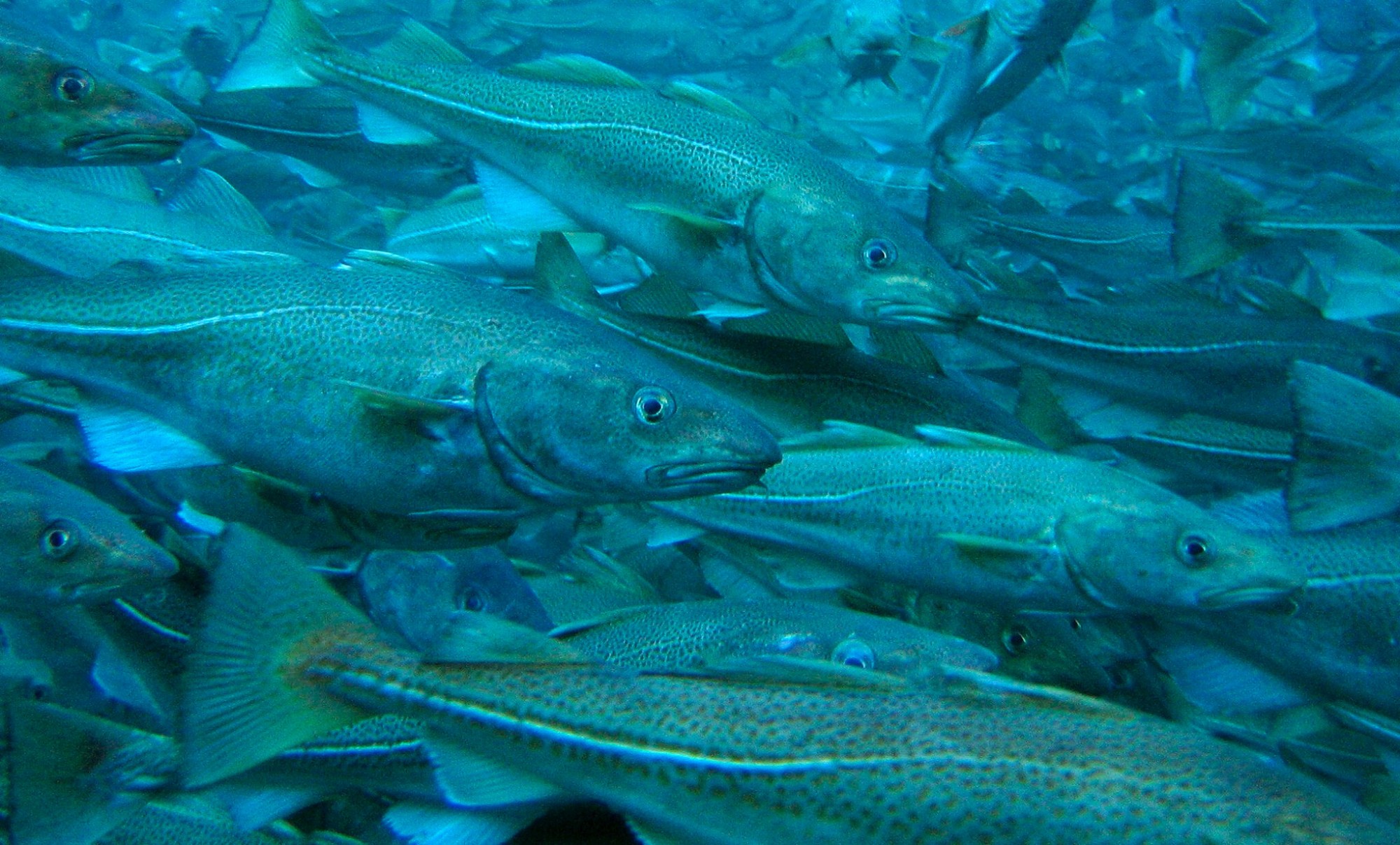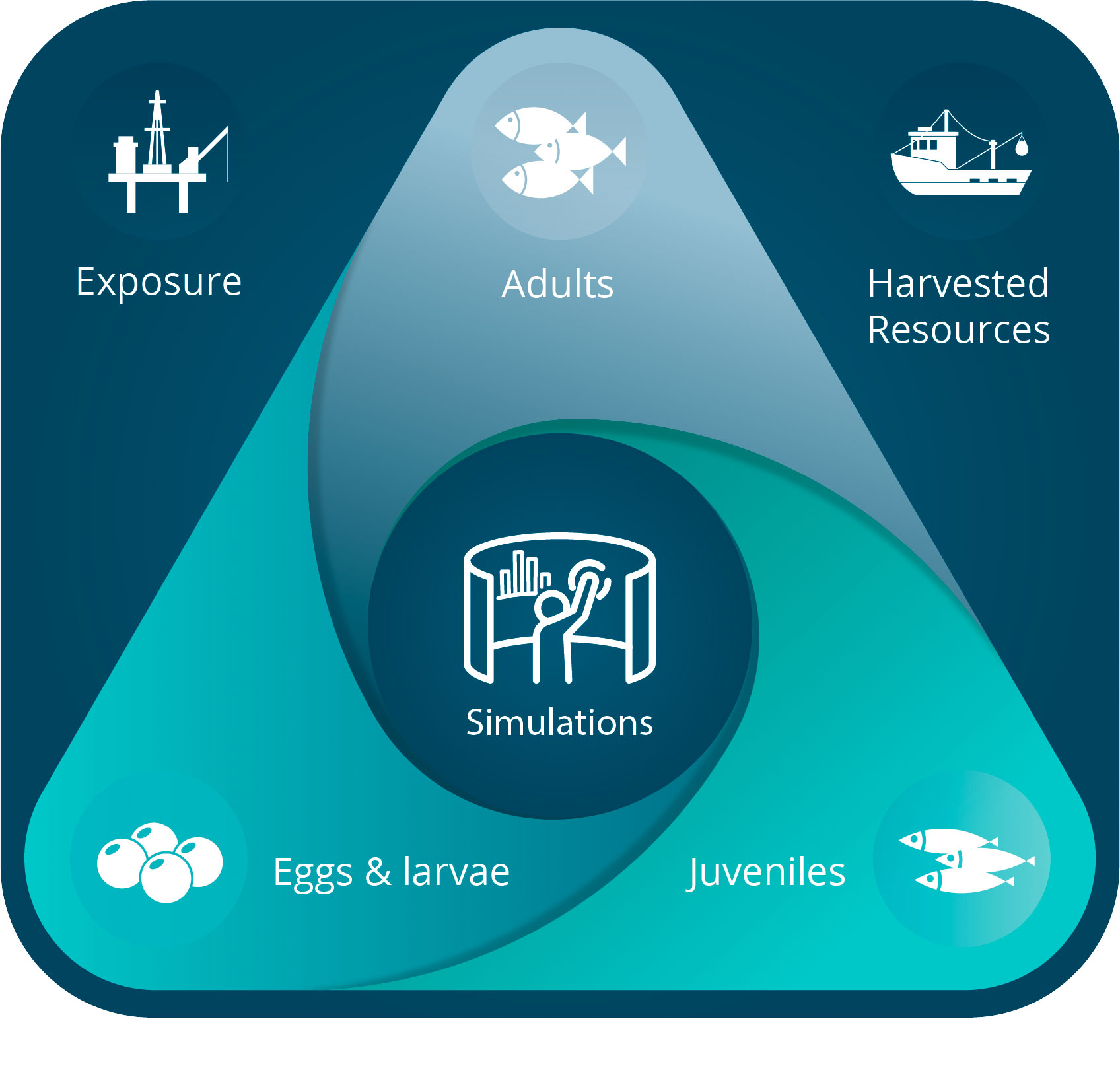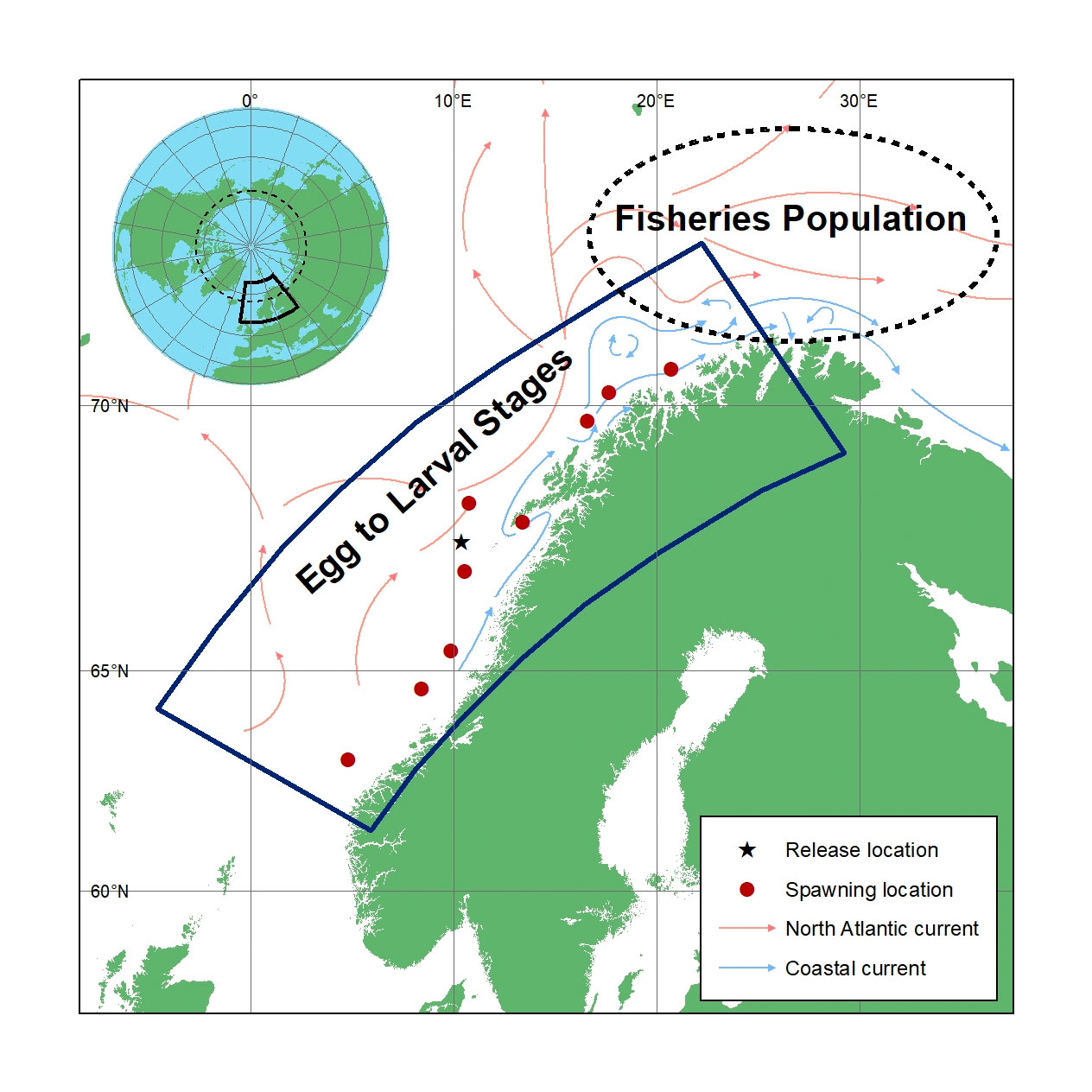
Assessing the consequences of oil spills on commercial fish
By: JoLynn Carroll, Starrlight Augustine and Geir Morten Skeie // Akvaplan-niva. Frode Vikebø and Daniel Howell // Institute of Marine Research. Raymond Nepstad and Ole Jacob Broach // SINTEF. Radovan Bast // UiT The Arctic University of Norway
1.
Each spring, Northeast Arctic cod (Gadus morhua) travel from the Barents Sea to spawn further south along the Norwegian coast from Møre to Lofoten, releasing millions of eggs into the ocean. These eggs then begin their own journey, developing into fish larvae as they drift with the currents, north and east towards the Barents Sea. The journey is perilous and their chance of survival is small. For every million eggs, only about 800 larvae survive the first half year. Their fate depends on the movements and prevailing environmental conditions of the North Atlantic Current, the accessibility of prey to feed upon, and their ability to avoid predators – including their own species. Only about 60 per million fish larvae live through their first year and only about 6 per million young cod successfully enter into the Barents Sea population at about 3 years of age.
Human activities in the cod habitat
The Northeast Arctic cod has been commercially fished for centuries. Its habitat overlaps with marine areas containing more than half of Norway’s new and unexplored petroleum resources. Norway’s marine environmental policy aims to balance the needs of different user groups while maintaining the health of the ecosystem. While the impact of commercial fishing is regulated and assessed annually through monitoring surveys, major oil spill events occur rarely, under unique circumstances, and with complex outcomes.
It has proved challenging to apply experience acquired from previous major oil spills to plan for and respond to potential future spills. After the Exxon Valdez and Deepwater Horizon oil spills, scientists recommended the development of ecosystem-oriented simulation technologies to assist with oil spill planning and assessment. Simulation technologies provide the quantitative capacity to examine dynamic processes and to extrapolate from individual effects to population impacts.
Simulation technology for impact assessment
Sustainable management of the cod population requires assessment of the combined risks and impacts from oil spills, together with losses through natural mortality and fisheries. The simulation technology “SYMBIOSES” was developed for this purpose by Fram Centre partners: Akvaplan-niva (project lead), Institute of Marine Research, SINTEF, and UiT The Arctic University of Norway, and 13 international partners. The developers applied an innovative strategy of linking four well tested, state-of-the-art models into a framework, and used the latest results from laboratory exposure studies to assess the toxic effects of oil compounds on fish eggs and larvae. The framework encompasses unique predictive capabilities because it is tuned with fisheries data collected annually since 1985 as part of Norway’s stock assessment monitoring programme.
ADVERTISEMENT
Researchers simulated over 150 major oil spills discharging between 17 and 350 metric tonnes of oil into the main spawning area. All scenarios start at a vulnerable time of year: the beginning of the spawning season in late March. The scenarios include years when the recruitment of juveniles into the Barents Sea cod population was high, medium, and low.

- SYMBIOSES is an impact assessment simulation technology for the investigation of oil spills and their impact on fish populations
- SYMBIOSES increases scientific understanding in support of the ecosystem approach to marine management
- SYMBIOSES was developed by Fram Centre partners: Akvaplan-niva (head of project), Institute of Marine Research, SINTEF, and UiT The Arctic University of Norway, together with 13 international partners
- SYMBIOSES includes four state-of-the-art models: 1) oil fate and transport, 2) ocean dynamics, 3) movement and development of fish eggs and larvae, and 4) multi-species population interactions
- SYMBIOSES has been applied to the Northeast Arctic cod population and its spawning areas in Lofoten and Vesterålen
- SYMBIOSES will be developed for several additional fish species (haddock, herring, capelin, saithe, polar cod) and with further improvements in the ecological realism
2.
Consequences for the cod population
Fish life history characteristics, such as egg transport, life stage duration, spawning frequency, and spawning–recruitment relationships, determine the resiliency of a fish species to population fluctuations. For Northeast Arctic cod, natural causes underlie the mortality of 99.9% of the spawned eggs.
And even though commercial fishing currently harvests about 25% of the biomass of the Barents Sea cod stock each year, this population is among the world’s largest and healthiest.
For the assessment of impacts from oil spills by SYMBIOSES, four different parameter sets were applied to account for how fish eggs and larvae are affected by exposure to lethal and sub-lethal concentrations of toxic oil compounds. Two of the four parameter sets had no apparent impact, while the other two sets reduced cod biomass by up to 12%. As a whole, however, the cod population remained healthy, with a sufficient number of juveniles surviving to replenish the population through spawning. We concluded that the diverse age distribution and health of cod stock in the Barents Sea render this population resilient to the combined losses from natural mortality, commercial fishing and the simulated individual oil spills.
Impacts on other fish species
From the beginning, the vision of SYMBIOSES was to create an advanced simulation technology for the assessment of oil spill impacts on the cod population that would include greater ecological realism. The simulated impacts on the cod population must be applied cautiously, particularly in a management context, as simulations are inherently simplifications and incorporate the limitations in our current understanding of complex natural processes. SYMBIOSES can and must continuously evolve in step with the latest research developments.
The developers plan to extend SYMBIOSES to evaluate additional fish species. Recent scientific achievements in the fields of marine biology, fisheries, marine ecology, and ecotoxicology, along with more powerful supercomputers, provide the necessary foundation to begin working on several species: haddock, herring, capelin, saithe, and polar cod. Extending SYMBIOSES to more species opens the door to address a wider range of lethal and sub-lethal effects with respect to multi-species impacts, predator-prey interactions, and competition, to achieve a more ecologically relevant view of potential oil spill impacts for Norway.
Discrete advances in research knowledge and their incorporation into decision-support simulation technologies aid our ability to synthesise and extrapolate the understanding of how human actions translate into environmental impacts. This, in turn, will allow humans to foresee and thus better prepare for events, consider how to modify actions, and evaluate appropriate mitigation measures should an accident occur. These proactive measures provide practical benefits for society and support the objective of sustainable management for northern Norway’s marine-based economy.

This story is originally published in the Fram Forum
The Barents Observer Newsletter
After confirming you're a real person, you can write your email below and we include you to the subscription list.


